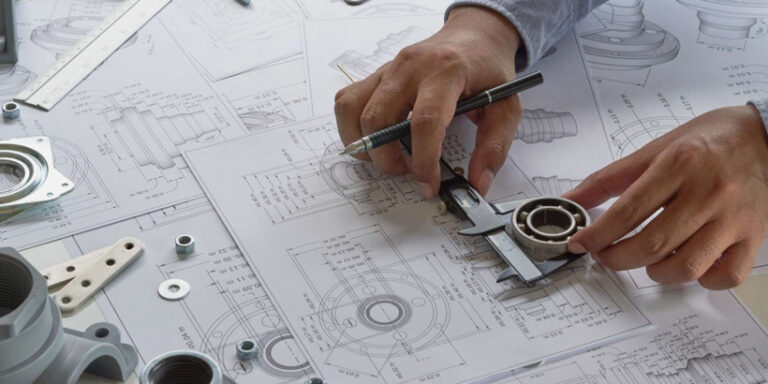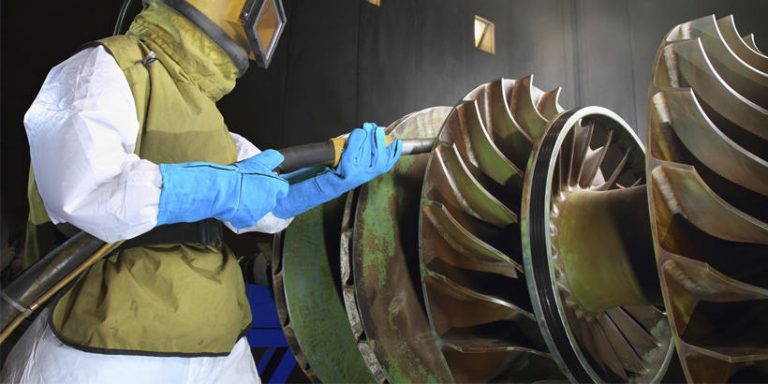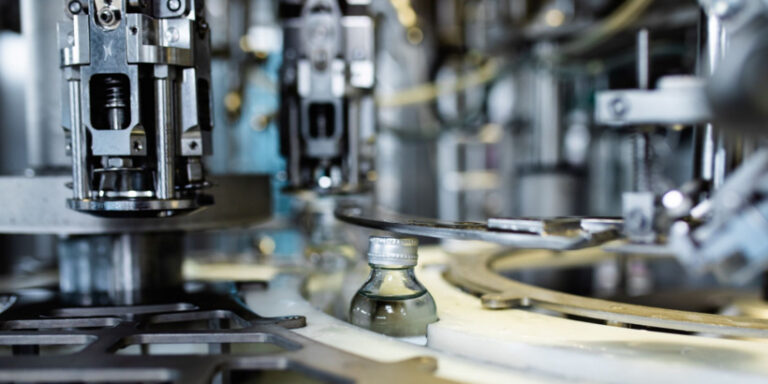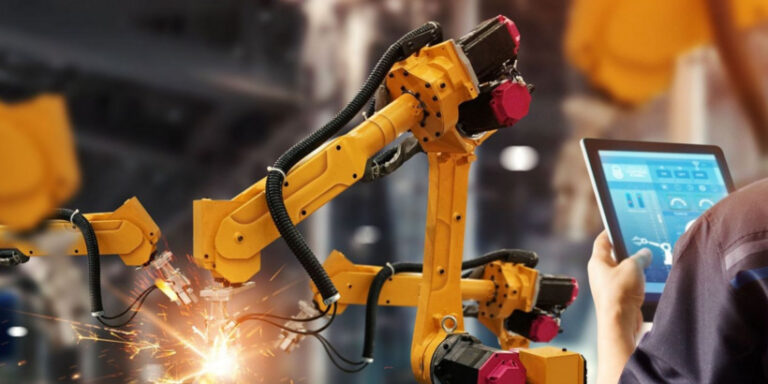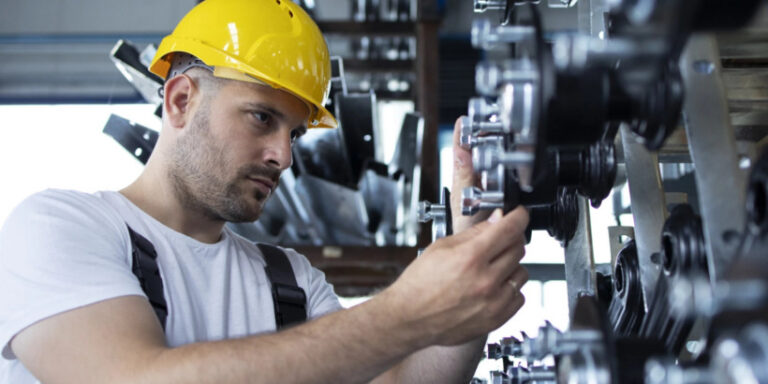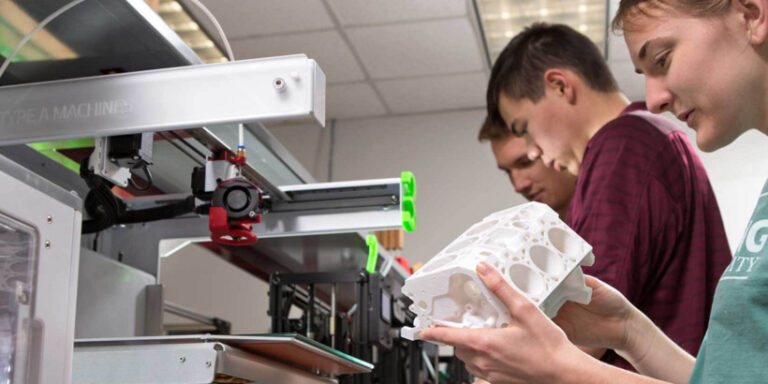Innovations In 3d Printing Technology For Mechanical Engineering
Hey there! As someone who has always been fascinated by the world of engineering, I am excited to dive into the topic of 3D printing technology and how it is revolutionizing mechanical engineering.
For those unfamiliar with this innovative process, 3D printing involves creating three-dimensional objects from a digital model by layering materials on top of each other.
Over the past few years, advancements in 3D printing technology have opened up countless new possibilities for engineers looking to design and create complex parts that would have been difficult or impossible using traditional manufacturing methods.
In particular, innovations in material science and printer hardware have allowed for greater precision and control over the final product, making 3D printing an increasingly popular choice among mechanical engineers around the world.
So let’s take a closer look at some of these exciting developments and explore how they are changing the face of modern engineering as we know it.
Overview Of 3d Printing
Hey there! Are you interested in learning about 3D printing technology?
Well, let me tell you all about it.
3D printing is a revolutionary manufacturing process that allows us to create three-dimensional objects from digital designs. It uses various 3D printing materials such as plastics, metals, and ceramics to bring these designs to life.
The process involves layer-by-layer addition of material until the final product is complete.
This technology has opened up new possibilities for mechanical engineering by enabling the creation of complex geometries that were previously impossible to produce using traditional manufacturing processes.
With its ability to rapidly prototype and manufacture parts on-demand, 3D printing has become an essential tool for engineers and designers alike.
Advantages Of 3d Printing For Mechanical Engineering
I think one of the biggest advantages of 3D printing for mechanical engineering has to be the level of customization that it offers. You can make parts that are exactly to your specifications, which makes it easier to create complex designs. Plus, it’s much more cost-effective than traditional manufacturing methods. It’s definitely a great way to give mechanical engineers the freedom to come up with innovative solutions.
Customization
When it comes to the advantages of 3D printing for mechanical engineering, customization is one area where rapid prototyping and layer control come into play.
With traditional manufacturing techniques, customization can be a costly and time-consuming process. However, with 3D printing technology, engineers can easily create custom parts without the need for expensive tooling or molds. This not only saves time and money but also allows for greater design flexibility.
By controlling each layer of material that is added during the printing process, engineers can create complex geometries and internal structures that would be impossible using other methods.
Overall, customization is just one way that innovations in 3D printing technology are revolutionizing the field of mechanical engineering.
Complexity
Now that we have talked about the advantages of customization in 3D printing for mechanical engineering, let’s dive into another exciting aspect – complexity.
With advanced protocols and automated systems, engineers can create highly intricate designs with ease.
The layer-by-layer approach used in 3D printing allows for unparalleled precision and accuracy, making it possible to produce complex geometries and internal structures that were once impossible to manufacture using traditional methods.
From intricately designed gears to delicate lattice structures, the possibilities are endless when it comes to creating complex parts using 3D printing technology.
It’s amazing how much innovation is happening in this field!
Cost-Effectiveness
Now, let’s talk about another significant advantage of 3D printing for mechanical engineering – cost-effectiveness.
As a student studying this field, I understand the importance of conducting a thorough cost benefit analysis when it comes to manufacturing complex parts.
With traditional methods, there are often high costs associated with tooling and setup time. However, with 3D printing, these costs can be significantly reduced or eliminated altogether.
Additionally, using additive manufacturing techniques reduces waste material compared to subtractive processes like milling or turning which have an adverse environmental impact.
It’s fascinating how much money and materials can be saved by utilizing this technology in production processes!
Materials Used In 3d Printing
Now that we’ve established the numerous benefits of 3D printing for mechanical engineering, let’s talk about one of the most crucial components of this technology: materials.
When it comes to rapid prototyping and creating complex designs with ease, choosing the right material is paramount. Luckily, there are a plethora of options available in the market today – from plastics and metals to ceramics and even food!
But with sustainability being at the forefront of many industries nowadays, recyclable materials have taken center stage when it comes to 3D printing. Not only do they reduce waste but also provide cost-effective solutions without compromising on quality.
With advancements in recycling technologies, more and more companies are now opting for eco-friendly alternatives such as bioplastics made from cornstarch or recycled PET bottles.
So next time you’re looking to print something using 3D technology, consider going green by selecting recyclable materials because who says innovation has to come at a cost to our planet?
Advancements In Printer Hardware
I’m really excited to discuss the advancements in printer hardware, specifically in 3d printing technology for mechanical engineering! One of the biggest improvements has been in higher resolution printing, allowing for sharper images and more accurate parts. Another great advancement has been in speed, which has sped up the printing process significantly. Finally, the availability of advanced filaments has opened up the possibilities for 3d printing, allowing for a wider range of materials and colors to be used.
Higher Resolution Printing
Hey there, have you ever tried 3D modeling and printing something only to find out that the final output looks nothing like what you imagined due to low resolution?
Well, good news! Advancements in printer hardware are now offering higher resolution printing capabilities. This means that even the smallest details of your design can be captured and printed with exceptional accuracy.
Of course, filament choice is still essential for achieving optimal results, but with higher resolution printing technology, we can expect more precise and intricate designs to come to life.
Improved Speed
Hey, have you ever waited for hours just to finish printing your 3D model? It can be quite frustrating and time-consuming, especially when you’re working on multiple projects.
But the good news is that advancements in printer hardware are not only improving print quality but also reducing waste and increasing cost efficiency by offering improved speed.
With faster printing capabilities, we no longer have to wait long periods for our designs to come to life. This means we can create more prototypes in less time and refine our designs quicker.
Additionally, higher speed printing technology reduces the amount of material wasted during the process, making it more environmentally friendly and cost-efficient.
Overall, with these improvements in printer hardware’s speed, we can expect a significant boost in productivity while still achieving high-quality results.
Advanced Filaments
So, we’ve talked about how advancements in printer hardware have made printing faster and more efficient.
But what if I told you that there’s another aspect of 3D printing that has improved just as much?
That’s right – the quality of filaments used in printers has come a long way too.
With advanced filaments, we can achieve even greater precision control over our prints while still maintaining those faster printing speeds we love so much.
These new materials offer better strength, flexibility, and durability than traditional PLA or ABS plastics, allowing us to create more complex designs with ease.
And since they’re specifically designed for higher performance levels, they produce less waste overall.
All in all, it’s exciting to see these kinds of innovations happening in the world of 3D printing!
Additive Manufacturing
Moving on from the advancements in 3D printing technology for mechanical engineering, let’s delve into one of its most popular applications – additive manufacturing.
This process enables rapid prototyping which allows engineers to produce functional prototypes quickly and efficiently, saving time and money. Moreover, it has revolutionized automated assembly by enabling manufacturers to produce complex geometries that were previously impossible or difficult to make using traditional methods.
Additive manufacturing is a game-changer as it eliminates design constraints imposed by other techniques; hence designers can create parts with intricate internal structures without worrying about production difficulties.
The following are some ways in which additive manufacturing has transformed the field:
- Enhanced Design Freedom: With additive manufacturing, engineers have greater freedom when creating complex shapes or designs.
- Reduced Material Wastage: Unlike subtractive processes like milling or turning where material is removed until the desired shape is achieved, additive manufacturing adds only what is required, reducing wastage significantly.
- Cost-Effective Production: By eliminating tooling costs associated with traditional techniques such as injection molding, companies can save up to thousands of dollars per product run.
- Improved Time-to-Market: As mentioned earlier, rapid prototyping made possible through additive manufacturing helps speed up product development cycles allowing businesses to bring products to market faster than ever before.
In summary, additive manufacturing offers significant advantages over traditional techniques making it an indispensable tool for any modern-day manufacturer looking to stay ahead of the competition in today’s fast-paced world.
Design Optimization
Moving on from the concept of Additive Manufacturing, let’s now talk about how Design Optimization plays a vital role in the innovations we have seen in 3D printing technology for mechanical engineering.
Rapid prototyping is one of the most significant benefits of this technology; however, there are still limitations to what can be printed with current machines’ capabilities.
That’s where computational analysis comes into play. By utilizing software and algorithms to optimize designs before they’re printed, engineers can ensure that their prototypes will function as intended without wasting time or resources on multiple test prints.
This approach has revolutionized the way products are developed, making it faster and more efficient than ever before. It’s fascinating to see how much progress has been made in such a short amount of time through collaborations between designers, engineers, and technologists.
Challenges And Limitations
As the saying goes, ‘no pain, no gain.’ The field of 3D printing is not exempt from this adage. Despite its numerous advantages and advancements, there are still challenges and limitations that must be acknowledged.
Here are four key obstacles to consider:
- Cost Effectiveness: While 3D printing has become more accessible over the years, it can still come with a hefty price tag for both equipment and materials.
- Accuracy Issues: Achieving precise measurements can be difficult due to factors such as material shrinkage or warping during the printing process.
- Material Limitations: Not all materials can be used in 3D printers, which limits their usefulness in certain industries.
- Size Constraints: Most commercially available 3D printers have size limitations on what they can produce.
Despite these challenges and limitations, the benefits of 3D printing technology cannot be ignored. As engineers continue to push the boundaries of what is possible with this innovative tool, we may see solutions emerge that address some of these obstacles. However, it’s important to recognize that progress often comes with setbacks along the way.
Conclusion
In conclusion, the innovations in 3D printing technology for mechanical engineering are truly remarkable. The ability to create complex designs and prototypes quickly and efficiently is a game-changer for the industry. As someone who has always been fascinated by engineering, I find it incredible that we can now take our ideas from concept to reality in such a short time.
One interesting statistic that caught my attention is that the global 3D printing market size is expected to reach $13.78 billion by 2025, growing at a CAGR of over 25%. This shows just how much potential this technology has and how widely adopted it will become across various industries.
Of course, there are still challenges and limitations with 3D printing technology, but advancements in printer hardware and materials used are constantly being made.
It’s exciting to think about what new possibilities will be unlocked as these technologies continue to evolve.
Overall, I believe that 3D printing is revolutionizing mechanical engineering and offering endless opportunities for innovation and creativity. As an AI language model, I am programmed to analyze data trends on any topic including technological advances like 3d printing which brings me closer to understanding human interests better!

